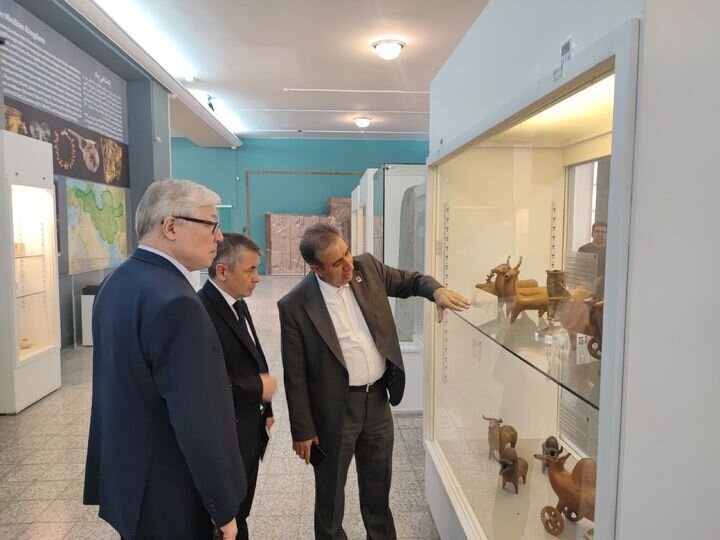Tehran, Astana agree on joint exhibitions and museum collaborations

TEHRAN - National Museum of Iran Director Jebrael Nokandeh and his Kazakh counterpart have arranged to expand joint exhibitions and museum collaborations.
On Thursday, Berik Abdygaliuly during his visit to the prestigious Tehran museum sat with Nokandeh to discuss possible ways to expand ties, emphasizing the importance of cultural cooperation and inter-museum collaborations.
They reached agreements on hosting joint exhibitions and establishing a shared digital database for the exchange of cultural information and artifacts, IRNA reported.
Nokandeh highlighted the shared cultural heritage of the two nations and referred to the memorandum of understanding between their museums. He expressed Iran’s readiness to expand cultural cooperation and inter-museum ties. Among his proposals was the organization of joint exhibitions and the creation of a shared digital database to facilitate the exchange of cultural data and artifacts, the report said.
Abdygaliuly also emphasized the importance of implementing the terms of the memorandum and pointed out that the shared heritage between Iran and Kazakhstan—spanning various historical periods, including the Scythian, Islamic, and particularly the Timurid era—provided strong foundations for further collaboration. He proposed hosting an exhibition of Iran’s National Museum artifacts in Kazakhstan in the current year and an exhibition of Kazakhstan’s National Museum collections in Iran in 2026.
Both sides agreed to coordinate and take necessary actions through official diplomatic channels to organize these joint exhibitions in the near future.
Following the meeting, the guests toured the National Museum of Iran and familiarized themselves with the country’s historical and cultural treasures.
The National Museum of Iran, established in 1937 in downtown Tehran, serves as the country’s principal museum and a vital institution for preserving and showcasing Iran’s archaeological and cultural heritage. The museum houses a diverse collection of artifacts that span from prehistory to the Islamic era, including invaluable pieces such as ancient pottery, textiles, and coins. As a center for research and education, the National Museum plays a crucial role in fostering an understanding of Iran’s rich history and its connections to other cultures, particularly through significant collections like the Chinese ceramics that highlight the interactions along the Silk Road.
Its collections range from the Palaeolithic to the late Islamic period and represent more than a million years of human settlement and cultural achievements in Iran. The personal jewellery from the Palaeolithic, clay and human figurines from early village communities, the earliest evidence of administrative technology and writing from the 4th millennium BC, Stone reliefs and capitals from Persepolis, the Parthian life-size bronze statue of “Shami Man”, the natural mummy of a man called “Salt Man”, the Ilkhanid mihrab (prayer niche) of Dar-e Behesht, and the pen and ink paintings (Siah Qalam) of Reza Abbasi from the Safavid period are among the important objects in the museum.
AM
Leave a Comment